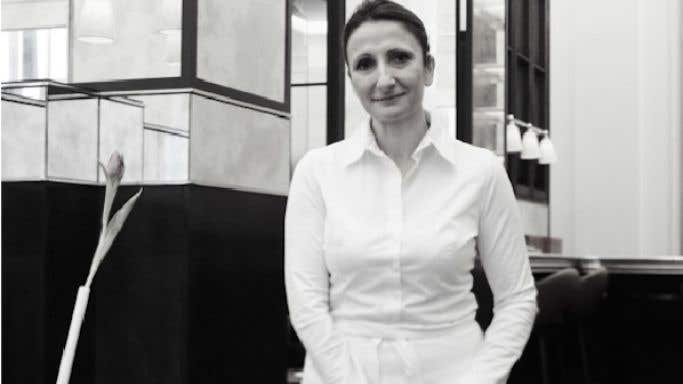A version of this article is published by the Financial Times.
My wife was as right as she always is. ‘La Dame de Pic is perfect Financial Times territory', she posited not long ago, adding, ‘we ought to go'.
And so we headed off one evening to Ten Trinity Square, the former headquarters of the Port of London Authority, that has recently been reconfigured into a hotel managed by the Four Seasons Group.
There is a very wine-focused private members club on the second floor, founded, inter alia, by Frédéric Engerer, the president of Château Latour, in turn owned by François Pinault. And the club’s menus, as well as the ground-floor restaurant, are overseen by Anne-Sophie Pic, the chef and proprietor of the long-standing and much-revered Maison Pic in Valence in the Rhône Valley.
All of which not only provides a suitable pedigree but also presents high standards to live up to. And yet when we walked out of the restaurant at 10.30 pm there were other less tangible features that proclaimed that this new venture was worthy of FT readers’ attention.
First of all there was the view from the front steps. This is of the Tower of London all lit up with a brooding sky behind it – a pure picture postcard for VisitEngland.
Then there had been in the restaurant the very effective combination of Alexander Muir, the charismatic maître d’ from County Clare, Eire, and the Italian chef, Luca Piscazzi, ably assisted by predominantly young, female French waiting staff alongside Erik Simonics, a knowledgeable sommelier from Slovakia. Overseeing them all is Jan Konetzki, the German-born wine director. They have obviously been attracted to these jobs by the lure of London’s current high standing in the restaurant world, but like so many in the hospitality business they must be wondering about their long-term future post Brexit.
The guiding principle of making sure that what is inside the front door has to match what is on the outside has been scrupulously followed in the building’s transformation. A couple of attentive doormen were on duty; flowers of exceptional length were on display as well as even more expensive staff outfits; a plush piano and singer entertained hotel guests underneath an enormous rotunda. The restaurant is down an equally plush corridor on the left although it will soon have its own entrance at the rear of the hotel.
Here the first obstacle to the building’s new life becomes obvious – the room’s massive height. At over five metres' tall the room does not lend itself easily to the cosiness that the word restaurant implies. And this uninterrupted height is not helped by the rather low seating, a combination that means that the conversations on other tables are invariably easier to listen to than that on one’s own.
Before I go on to discuss the food and the service, let me get two other small criticisms out of the way. The first is the choice of typeface on the menu. It is small and not dark enough to be easily read, particularly when the restaurant’s lighting is on the low side.
Then there is the kitchen’s seeming infatuation with coffee. It came mixed with the butter served with the bread – although we asked for this strange combination to be changed for ordinary salted butter; it came mixed with yuzu as one of the amuse-bouches; and it came baked on top of the veal sweetbreads, one of only four meat main courses. This is too much.
Happily, the execution and choice of first and main courses more than make up for this seeming heavy-handedness. As did their preparation, which, as befits the world’s top female chef in conjunction with an Italian who has worked in Hong Kong, often involves Asian influences.
Unquestionably, the best of these Asian-influenced dishes was a first course of a Scottish scallop marinated in black cardamom, jasmine, apple granita and sake lees. This was served on a white dish with the scallops thinly sliced across it, the black cardamom clearly discernible. But it was the addition of the sake lees, poured from a small jug, which lifted the whole dish and took it to the truly inspirational.
This dish was matched in its intensity of flavour, if not quite in its attractiveness, by a dish of Brittany abalone, lemon balm and geranium infused with dashi. These rare sea molluscs, now successfully farmed off the Breton coast, are an unusual treat for anyone who enjoys oysters and the taste of the sea. Slightly chewier than oysters, abalone possesses a richer, nuttier, deeper flavour.
None of the main courses we tried possessed the same interest as these two starters, perhaps because the whole section concentrates too heavily on flesh, whether meat or fish. There is no doubting the quality of what the kitchen offers, particularly the Basque pork and the Cornish turbot, but in serving them relatively bare, a contrast of flavours is missing. The same is true of the short list of desserts (£14 each) that are too bland and over-sweet.
The wine list is exceptional, both by the bottle and by the glass, and fairly priced. But it is the food that needs attention, more oomph, something that will serve to distinguish La Dame de Pic as a restaurant of its own standing rather than one that happens, conveniently or otherwise, to be in a hotel.
La Dame de Pic Ten Trinity Square, London EC3N 4AJ; tel +44 (0)20 3297 9200

